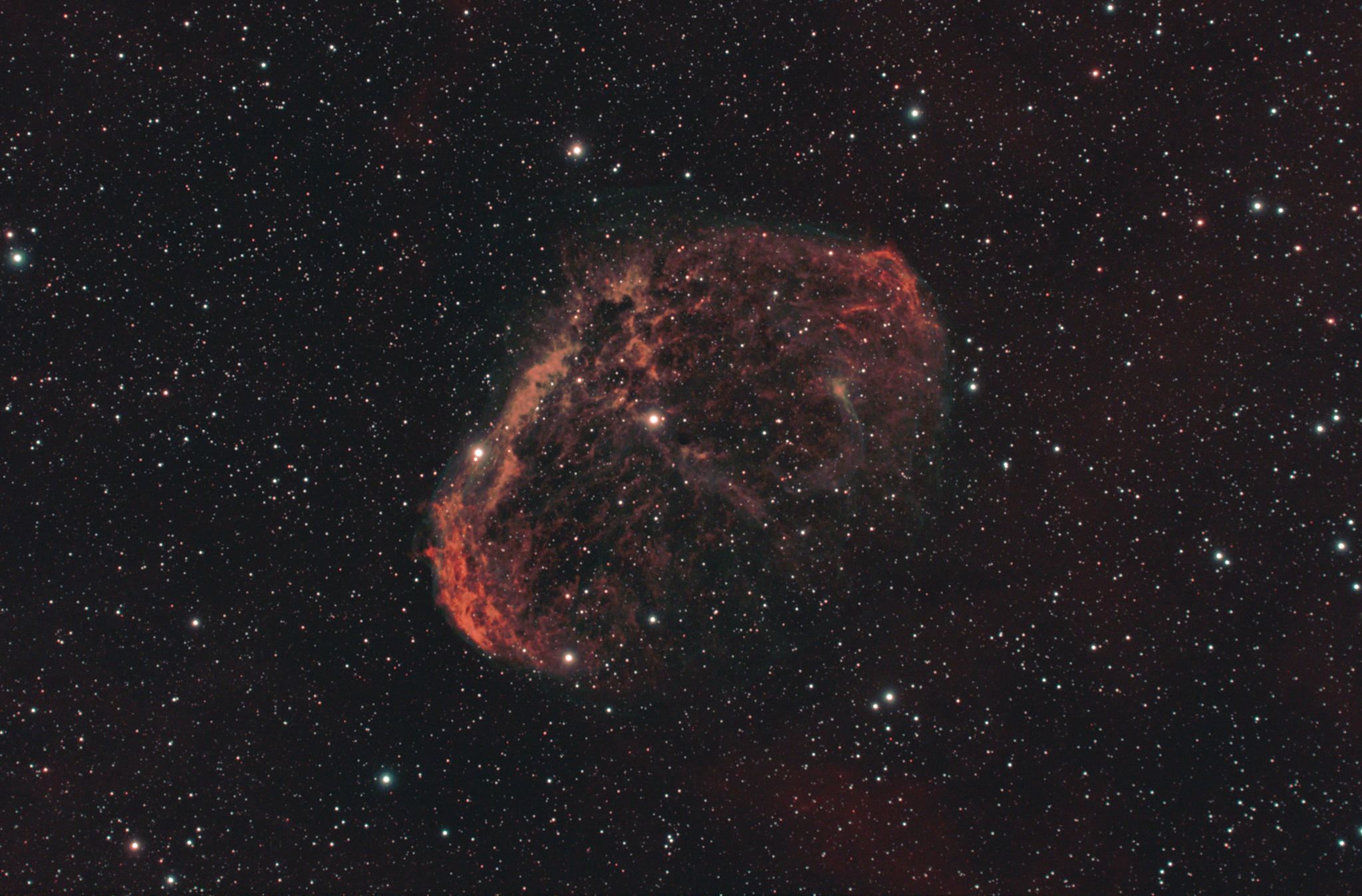The Crescent Nebula: NGC 6888

|
| The Crescent Nebula (NGC 6888): Photo taken under Michigan skies on July 7th, 2021 |
At about 5,000 light-years away, the Crescent Nebula (NGC 6888) is an emission nebula located in the constellation Cygnus (Greek for Swan). It was discovered by the German astronomer William Herschel in 1792. This beautiful brain-like marvel is apparently the result of interacting stellar winds from different stages of life of Wolf-Rayet star WR-136.
In the star's past life (before becoming a Wolf-Rayet), it had undergone a transition into a Red Super-Giant some hundreds of thousands of years ago. As a Red Super-Giant, it slowly puffed out a layer of gas that settled around the star. This star eventually underwent another transition, turning from a Red Super-Giant to a Wolf-Rayet with 'fierce stellar-winds'. The interaction between the stellar winds and the earlier (and slower moving) outer gas layer resulted in both the shaping and illumination of the reddish/blueish structure we are able to observe today.
Supposedly, WR-136 is near end-of-life and is expected to undergo the spectacular demise of supernova.

|
| Various nebulae located in the constellation Cygnus (the Swan) |
Comments
Post a Comment